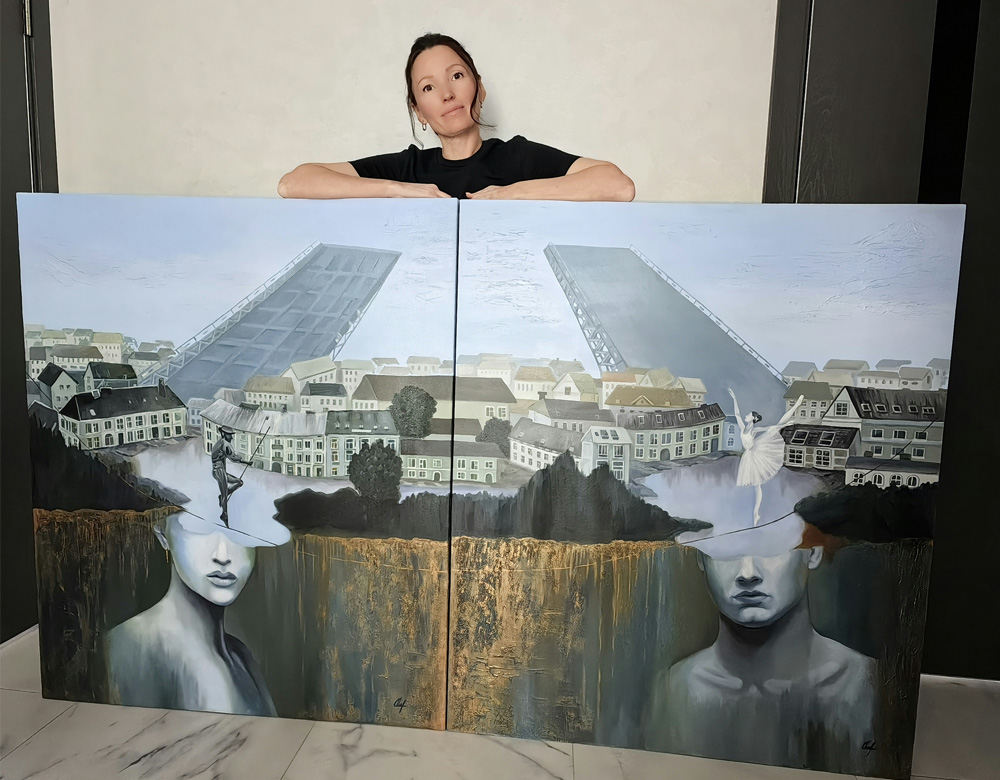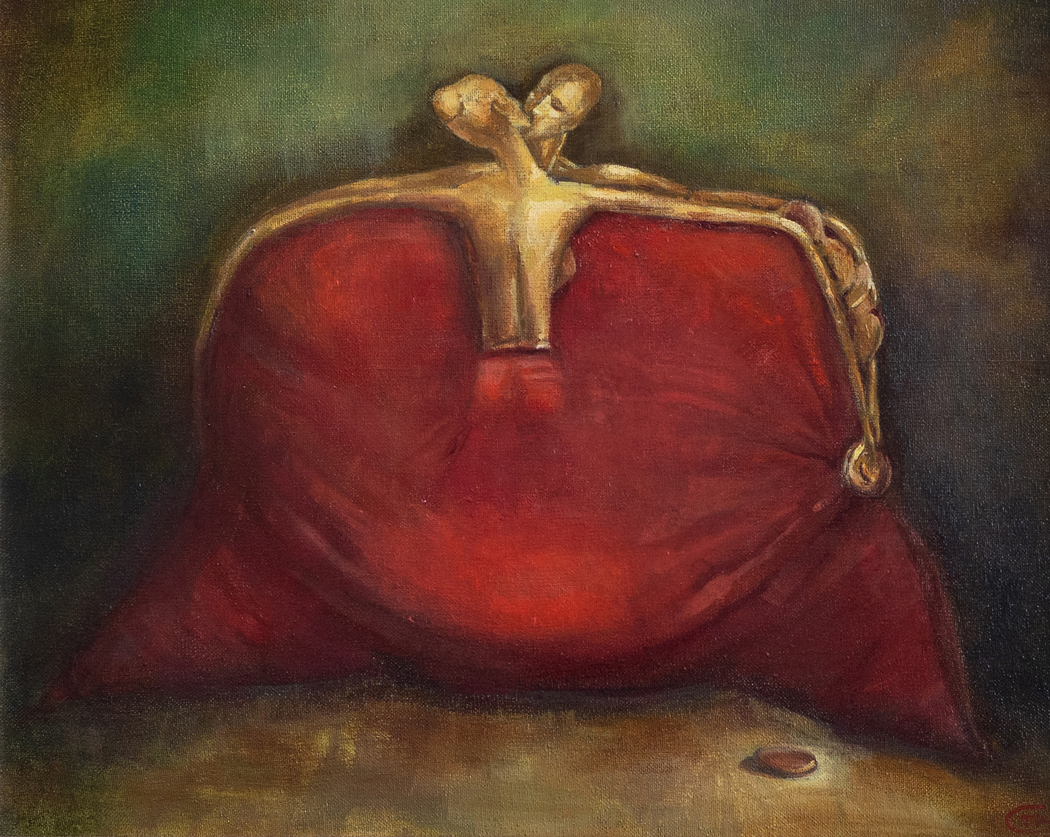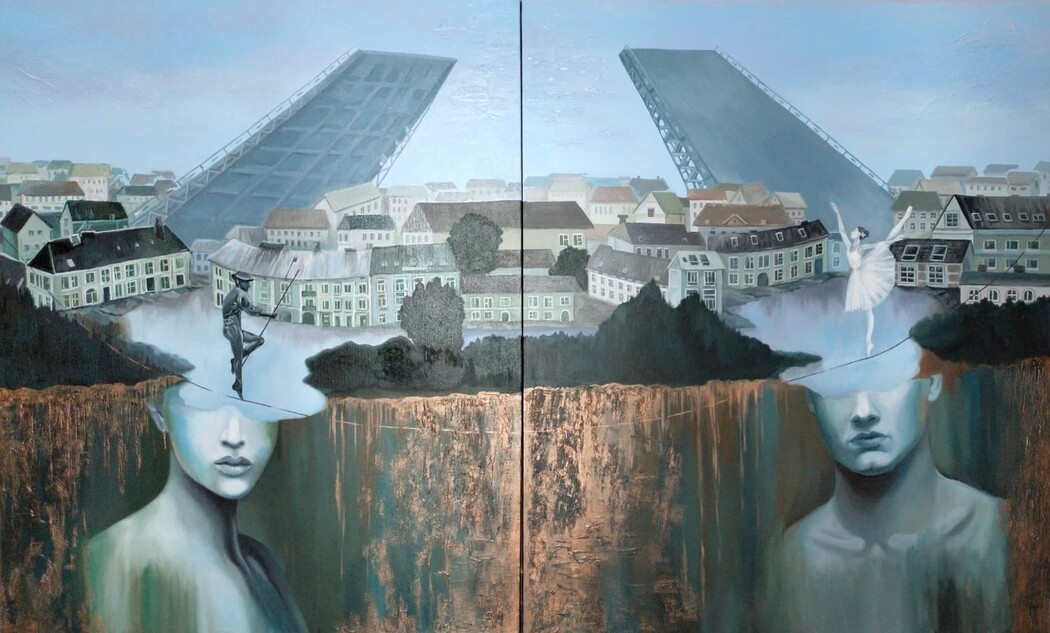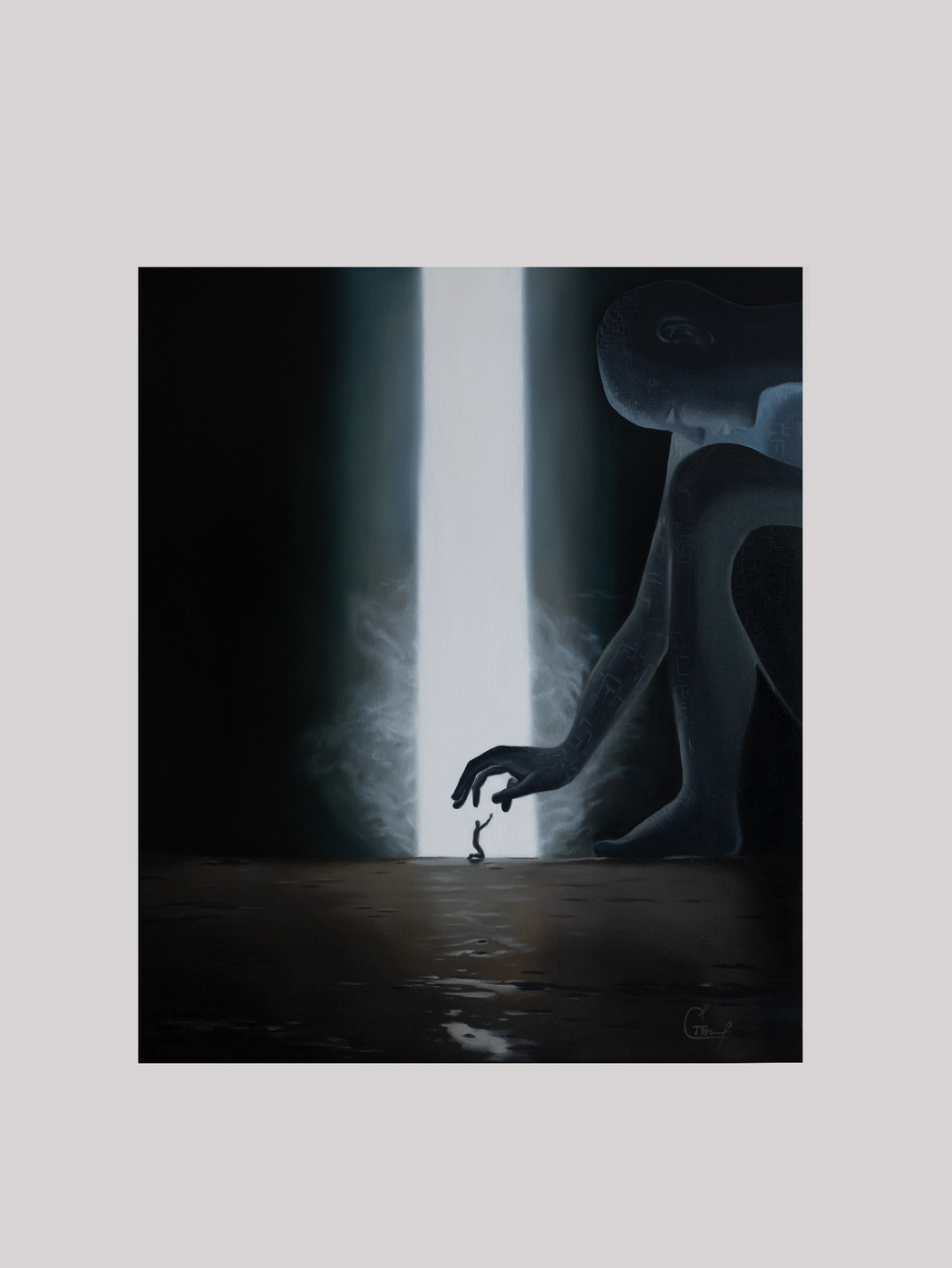Tatiana Davydova
Year of birth: 21.06.1978.
Your education: Naive artist, constantly engaged in self-education in art studios.
Describe your art in three words: My style is a symphony of surrealism and abstraction, where every detail is part of one idea.
Your discipline: Abstract composition, surrealism.
Instagram
Could you tell us about the process behind combining different materials such as oil paints, acrylic, metallic dust, wood, and charcoal in your work? How do these elements help convey the themes of your art?
I call this “Mixed Techniques.” By using this method, I am free from restrictions—it’s a creative field where experimentation is possible. I’m inspired by shapes, color, and geometry. I enjoy the process of turning the intangible into the tangible. Wood, charcoal, or other materials express my state of mind. With these materials, I can bring my ideas to life on canvas and share my understanding of the world.
Your art explores the connection between consciousness and the subconscious, as well as the boundary between dreams and reality. Can you share how these themes have developed in your work over time?
Dreams and reality, paradoxical combinations of forms and factors, mysteries and puzzles in drawings—all of this merges in surrealism. Surrealism itself is unique; it contains everything that one cannot see in reality, only in the subconscious. It can all be depicted on canvas. Something bold, unusual, and unique—everything that excites and inspires me. I began my journey with realism, then moved on to surrealism and abstraction. The deeper I delved into these styles, the further I moved away from realism. After completing a series of works in these styles, I realized they were close to me.
How do you approach the philosophical reflections on human nature in your pieces? Are there any specific thinkers or philosophies that inspire your work?
I’m inspired by images from nature; I like turning simple things into complex narratives. I enjoy creating compositions that make the viewer think. Overall, I apply unusual images and illusions. My inspiration is the German artist Anselm Kiefer. I find him brilliant. I’m also interested in Wassily Kandinsky’s theory of color. I admire the works of surrealist masters Salvador Dalí and René Magritte.
Surrealism and abstraction often leave room for personal interpretation. Do you have a particular message or emotion you hope viewers take away from your paintings, or do you prefer to leave your work open-ended?
My works are always infused with metaphorical meaning and mysteries. My goal is to inspire you to journey into a world of imagination, where reality and surrealism intertwine. My themes are important to me and to you, as they allow each person to find their own unique meaning and inspiration in the art.
Could you share how your personal experiences influence your exploration of the inner world and subconscious themes in your art?
I tell a story, filtering it through my inner world, and try to convey the meaning that lies within each of my works. I believe everyone can express themselves, and I’m glad that I am able to do so.
How do you decide on the balance between abstract elements and recognizable forms in your compositions? Is there a particular formula you follow, or is it more intuitive?
In my art, abstract elements only complement the main composition. I don’t consciously track the balance. Yes, it’s more of an intuitive process. Associations arise involuntarily.
Could you describe a particular painting of yours that holds a special significance to you and why?
The diptych “Ballerina & Chimney Sweep” was inspired by the lines of a poem by the poet Vadim Lavrinenko. The words touched my soul, and the images came to me immediately. This turmoil of feelings gave me no peace. I love St. Petersburg. I was painting Love. Love and mystery, sadness and admiration.





Leave a Reply